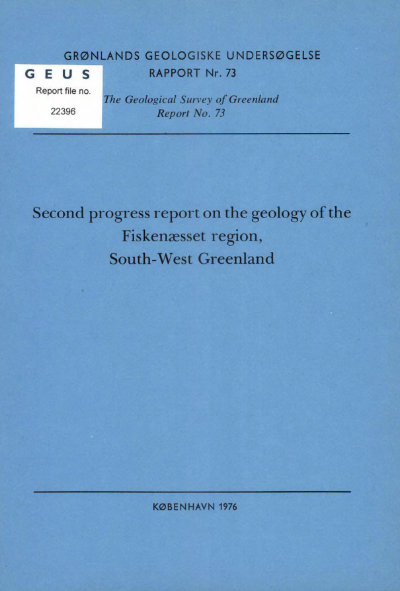Fuchsite and chrome-epidote from Fiskenæsset
DOI:
https://doi.org/10.34194/rapggu.v73.7423Abstract
In many places in the Fiskenæsset region the anorthositic rocks show a characteristic emerald green staining. The occurrences are connected with faults and shear zones, along which hydrothermal solutions have circulated, resulting in a bleaching and alteration of the anorthositic rocks (Ghisler, 1970). The plagioclase became saussuritized to white mica and epidote, and occassionally calcite is also found. Mafic minerals were altered to chlorite and more rarely to tale. In some places such as the Majorqap qava area a green rock consisting of epidote and an emerald green mineral is found as 10-50 cm thick lenses in anorthosite. The emerald green mineral mainly occurs.in the vicinity of chromite horizons or where accessory chromite is present in the anorthosite. Chromium was extracted from these chromite grains and entered the lattice of some of the minerals formed as aresult of the breakdown of plagioclase. Some mineralogical data on these two chromium bearing secondary minerals, fuchsite and chrome-epidote, are given below.
Downloads
Published
Issue
Section
License
This article is distributed under a CC-BY 4.0 licence, permitting free redistribution and reproduction for any purpose, even commercial, provided proper citation of the original work. Author(s) retain copyright over the article contents.


